|
Creating an access hatch in an airbox
By Andrew Linn
I have built a Puddle Duck Racer (www.pdracer.com
for the official website). One of the very few design rules for
a Puddle Duck Racer is that it has floatation installed. I figured
on getting a couple of 'pool noodles' and stuff them in and call
it good. Then I read the Flotation article
on the Puddle Duck Racer website and decided I would make air
boxes by enclosing the fore and aft deck areas instead.
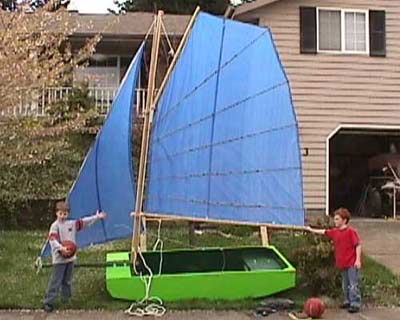
I figured the air box would be the lightest and cheapest possible
way to provide floatation. And as a plus, I can use the area for
dry storage of lunch and such. All I had to do was install waterproof
access hatches.
First I had to select the proper material to make the hatch out
of. What is needed is a closable lid - optimally a screw-on lid.
Chlorine - used to maintain pools - comes in screw-top buckets,
but the local pool supply company didn't have any empty buckets,
and I don't have a pool, so I went away empty handed. I went to
a health club - which has an Olympic sized pool. They get their
chemicals in 15 gallon buckets with lids 18 inches in diameter.
Too big for my needs. I then went to a hotel that has a pool.
The handyman gave me a gallon bucket with screw-top lid. The lid
is just over 12 inches in diameter, fine for the aft air box,
but too big for the fore air box.
I needed something with a removable lid that was both big enough
for me to reach into and pass things through, but still less than
9 inches in diameter. I went to the local Wal-Mart and found a
parrot food container that would have worked, but I have no parrot.
I found a kitty litter container that would have worked, but I
have no cats. I found a food container with about a 5 inch diameter
screw top lid that I would have gotten, but it cost $2.00, and
I am too cheap for that.
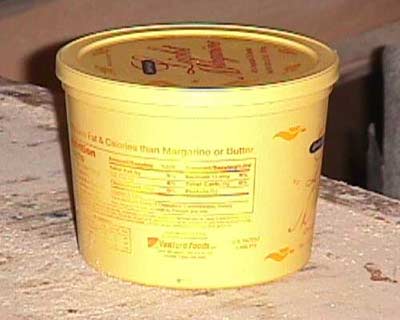
I settled for this empty margarine container I had lying around.
The lid snaps on tight, it is big enough for - maybe 7 inches
in diameter, and the price is right.
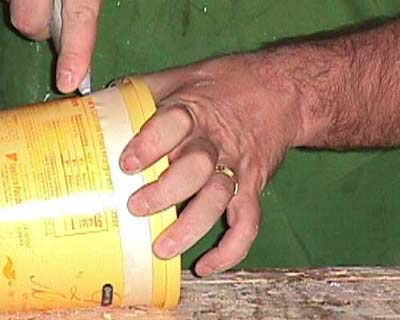
I started by marking a straight line around the container -
I used some masking tape as a guide since I couldn't find my Sharpie
- and then cutting it with a razor knife. This will form the wall
of the hatch, and must be long enough to go through your bulkhead
and leave enough sticking out for attaching the lid. I cut it
long so I could trim it later.
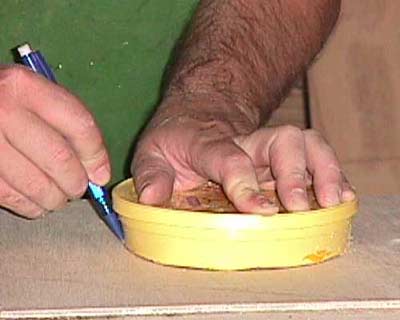
I had cut out the bulkhead already, and I traced around the
outside of the hatch wall.
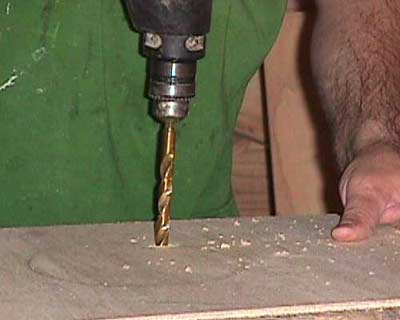
I drilled a starting hole - big enough for my jigsaw blade,
inside the circle and close to the line.
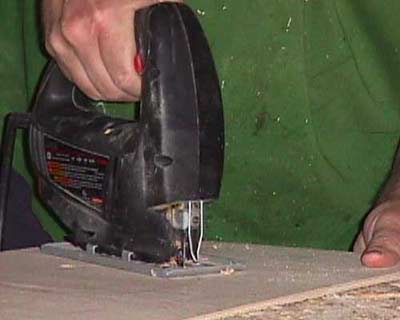
The jigsaw went smoothly around the circle and made a nice opening
for the hatch. I used a new blade - one that was supposed to leave
a smooth cut on both sides of the plywood. It did a fair job.
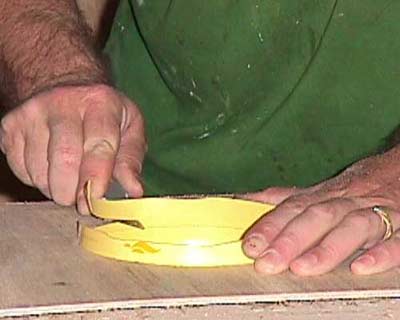
With my razor knife, I cut off most of the excess.
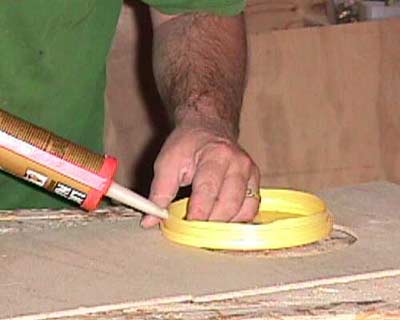
I laid a bead of adhesive around the lip that will be in contact
with the wood. I used Liquid Nails because it is cheap, sticky,
dries hard, and is strong.
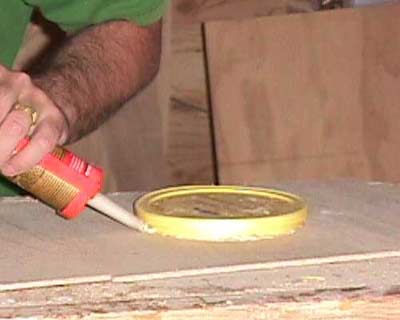
I crammed the hatch wall through the hole and held it there
under pressure for a few minutes. I then applied another bead
of adhesive to act as caulking, and because I like to play with
caulking guns.
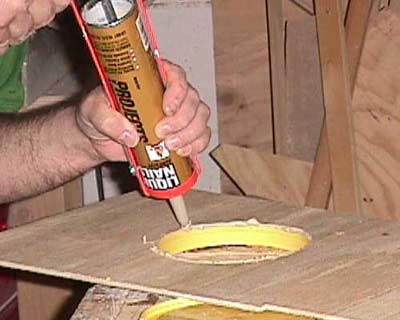
I flipped the assembly over and laid a bead overlapping the
edge of the wall and spreading onto the bulkhead. I hope this
helps keep the margarine tub secure to the bulkhead.
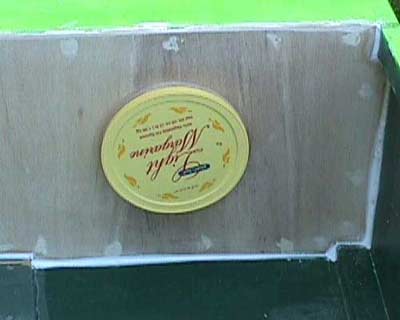
I then installed the bulkhead and caulked the seams. The idea
is to have a waterproof box, so I glued the bulkhead with Elmer's
Ultimate polyurethane glue - cheap knockoff of Gorilla Glue. This
stuff foams up while it cures - filling in gaps and such.
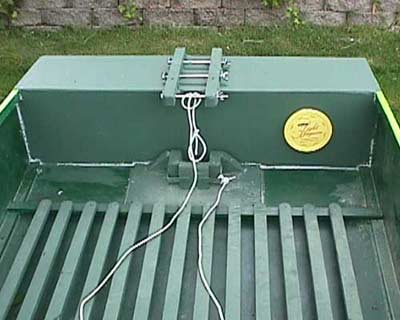
Finished air box with waterproof access hatch. Cheap and easy.
A note on caulking: I used whatever caulk was in the gun from
the last project - in this case Kitchen and Bathroom caulk. This
type of caulk does not hold paint well at all. Spend the $1.57
for some paintable caulk.
|

